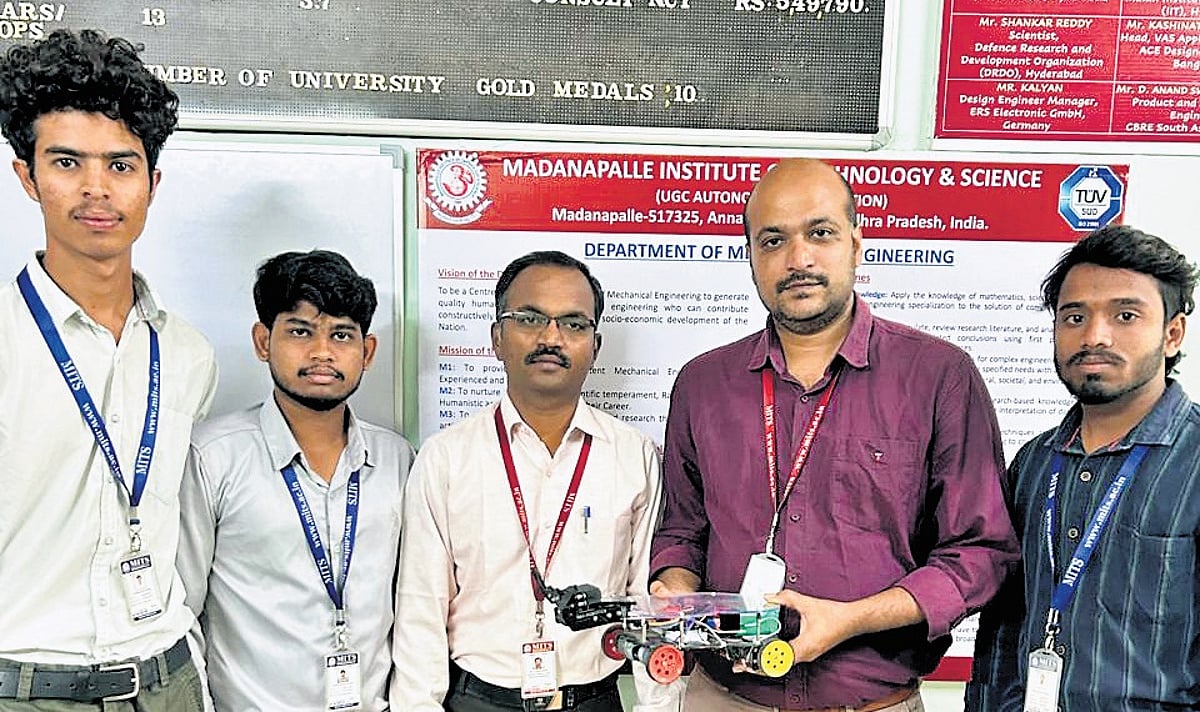Innovative Rover Developed by Students Promises to Save Lives in Disasters

In an impressive display of ingenuity and social responsibility, three final-year Mechanical Engineering students from the Madanapalle Institute of Technology & Science have designed a revolutionary multi-purpose autonomous rescue rover aimed at enhancing disaster response efforts. This initiative emphasizes the potential of applied learning in engineering and its ability to drive meaningful change in society.
A Lifesaving Innovation
The rescue rover, conceived by students P Aslam Khan, P Mohammed Affan, and Shaik Shaik Basha, is engineered to operate in hazardous environments where human access is restricted or perilous. This innovative device is designed specifically for critical situations such as earthquakes and industrial accidents, with the primary goal of mitigating loss of life during such incidents. The rover functions as a first responder, capable of navigating through rubble and smoke, collecting invaluable data, and detecting survivors while keeping human rescuers safe.
Advanced Features at Work
Powered by a 12-volt battery and equipped with an ESP32 microcontroller, the rover combines robust mechanical design with sophisticated electronics. It employs advanced sensors for environmental monitoring, including measurements of hazardous pollution particles and leaked gases. Notably, the rover includes thermal, infrared, gas, and vibration sensors to locate survivors and assess risks in challenging conditions such as smoke-filled spaces.
The Road Ahead
The team, guided by Associate Professor S Baskaran and Assistant Professor Anantha Raman, has undergone rigorous lab-scale testing and is now poised to enhance the rover's real-world applicability. Future improvements will focus on obstacle avoidance, sensor capabilities, and real-time data logging, ensuring that the rover is fully equipped for emergency situations.
With its open-source design and cost-effective nature, this rescue rover holds great promise for emergency response teams, research institutions, and industries concerned with safety and ecological monitoring. As Anantha Raman aptly stated, “This project truly demonstrates the power of applied learning.” The potential impact of this innovation not only showcases the capabilities of young engineers but also highlights how continuous education and dedication can lead to breakthroughs that may one day save countless lives.